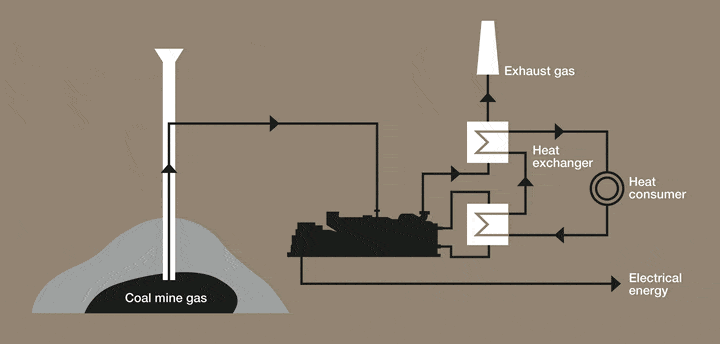Coal Seam Gas (CSG) or Coal Bed Methane (CBM) is primary coal seam gas collected from unmined coal seams. These coal seams are drilled down into, releasing the associated gas which is extracted and can be used to generate electricity. CSG consists of over 90% methane and can be harvested independently of coal mining in some locations. The gas composition is normally stable, meaning that the gas can be fed directly into the natural gas network or a gas engine.
Methane is a gas formed as part of coalification (coal formation). When coal is mined, methane is inevitably released from the coal seam and the surrounding rock. The methane content within coal seams generally increase as depth increases. Older seams also have a higher methane content. Deep coal seams also have elevated pressure levels. Underground mines account for the majority of all methane emissions from the coal sector. Methane is highly combustible an as such, poses implications for the safety of mine operations. It is also a potent greenhouse gas. Tackling methane emissions is an important step in meeting the challenge of climate change and in ensuring the safety of mining operations. Methane can also act as a valuable source of energy as it is the principal constituent of natural gas, allowing countries to further diversify their energy supplies.

Coal Seam Gas External links
- World of coal – Coal Seam Methane
- Queensland State Government, Australia Coal Seam Gas Fact Sheet


